
There are two primary ways to improve an existing home’s energy performance and comfort: reduce air leakage and slow the movement of heat through the building envelope. In my last post of this series on existing homes, I looked at air leakage. Here, I will talk about insulation as a strategy for slowing heat loss or gain.
Retrofitting complicated roofs
The attic can be the area of the home with the best return on investment when it comes to insulation improvements. Of course, the feasibility of such upgrades will depend on the type and accessibility of the space. Convoluted ceiling designs with many different rooflines and cathedral ceilings are some of the most difficult roofs to insulate (and air-seal) correctly—in both new construction and existing houses. One of the most common questions asked on GBA is how to properly insulate a cathedral ceiling. In an existing home, the best way may be to remove the ceiling finish and start over. Occasionally, this is the advice I give during an energy audit and it is never what a homeowner wants to hear.
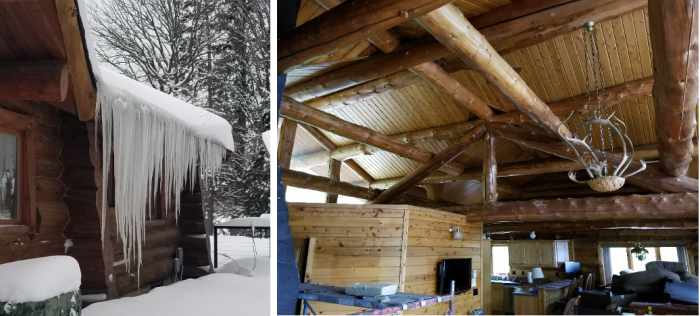
Retrofitting the roof in the photos above would require a different approach to improving the thermal performance. It can only be accomplished from the exterior. When the roof was constructed, the 1-1/2-in. tongue-and-groove paneling was installed over the log trusses and covered in tar paper. The 2×6 framing was fastened to the paneling to create a space for R-19 fiberglass insulation, and then the roof sheathing and roofing materials were installed. It is impossible to just remove the interior finish. The approach of removing the exterior portion of the roof makes the most sense in cases where the roof shingles (or other roofing materials) are being replaced.
Adding insulation to the exterior of the existing roof is…
Weekly Newsletter
Get building science and energy efficiency advice, plus special offers, in your inbox.

This article is only available to GBA Prime Members
Sign up for a free trial and get instant access to this article as well as GBA’s complete library of premium articles and construction details.
Start Free TrialAlready a member? Log in





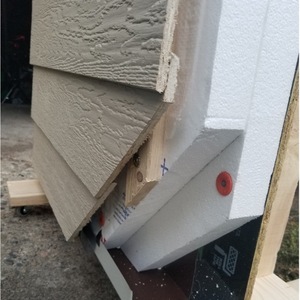
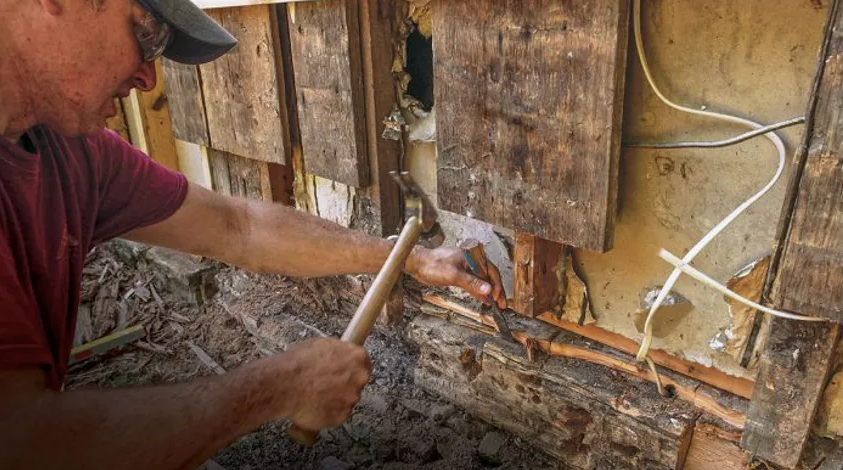
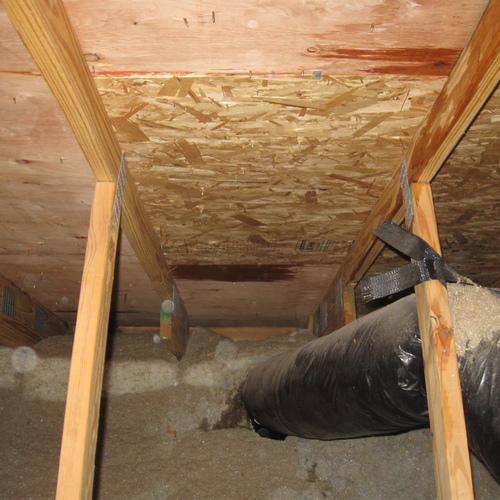
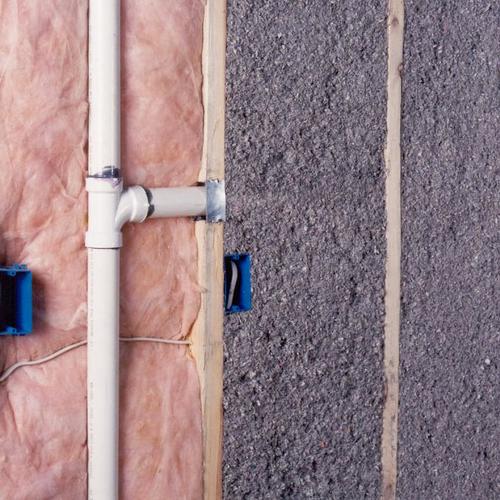






7 Comments
The photo at the top of the article shows adding exterior foam to an existing roof. As a builder I would tear off the old shingles before adding the insulation and sheathing. Depending on how the roof is framed, shedding the weight of the old roofing could be important.
I’m finishing up a row home in Philadelphia and trying to figure out the best way to insulate what would be the time joist (joists are pocketed into brick). I like the idea of spray foam here, as it could potentially air seal and insulate, but I worry about trapping whatever moisture finds its way in. The joists have been there for a hundred years and that’s probably because they can dry out. Would an open cell froth kit be a good idea?
Neither walls are exterior walls - one neighbor is an original 1920 row home, the other is a new construction. There’s a 3” gap between the new house and mine that is sealed, kind of, but it wouldn’t pass as a true party wall.
Thanks!
You brought up the risks of adding an insulation to an area where slowing or stopping the movement of moisture may be detrimental to the assembly. CCSF probably wouldn't be my first choice in this instance. How I would approach the area, is there air leaking around the joists or any other holes or cracks in the brick? To determine this, a blower door test may be required. If there are air leaks, is there another option to seal the leaks without using CCSF? Maybe a caulking or another sealant, not easy to accomplish with rough brick. Next, how cold is the space? You indicated that the walls are not exterior but kind of a "party wall". If they are not cold, do they need insulating? If they are cold, and you've made them airtight by some other means, you may be able to use a fibrous insulation with a better drying potential. Open cell spray foam may be an option, but I probably wouldn't apply it very thick. Some insulation and air sealing but still allow some vapor movement.
Sometimes it's better to live with the energy penalty rather than use a risky assembly.
Hey Randy,
Thanks for the reply. I'm purchasing a blower door kit in a couple weeks and plan to run multiple tests to train myself, and out of curiosity. I don't care as much about the thermal loss, I'm looking for a way to air seal. I can't continue my vapor barrier through pocketed joists.
I really dislike CCSF - I believe it's overused and is akin to a plastic bag over one's head. I'm considering an OCSF froth kit, or a fluid applied vapor barrier. The article copied below ends by saying a well flashed, brick wall in Philadelphia is low risk - maybe I'm overthinking things...
https://www.greenbuildingadvisor.com/article/insulating-old-brick-buildings
There is an interview in the current Fine HomeBuilding magazine, February/March, 2022 with Wiliam B Rose you should read. He touches on the subject of freeze/thaw cycles in historic buildings. Very interesting.
Purchasing a blower door, nice! Learning on your own home will be both educational and depressing. Good luck!
I have insulated wall cavities with 2 layers 1 1/2 inch EPS aluminum faced and sealed (visible) edges with expanding foam. walls aren't fully cover with drywall .
after pulling out Styrofoam from some cavities plywood sheathing seems to be wet on interior.
outside is old felt paper and cedar singles
temperature outside around 20 F
what went wrong?
Hi Robert,
The sheathing can be damp for a couple reasons. One, the interior side of the sheathing hit the dew point temperature and had enough water vapor come in contact with the surface or two, an exterior moisture source made the sheathing damp, and that moisture was driven through the sheathing. With an exterior temp of 20°F, I would assume it to be the first reason. Somehow air was moving around the EPS foam, probably around the spray foam edges. I don't like canned foam for this reason, it's hard to tell if you have a good seal, especially when trying to seal a tighter joint. Try using a quality caulk instead of the foam, you might have to use a foam backer rod if the crack is large.
Log in or become a member to post a comment.
Sign up Log in